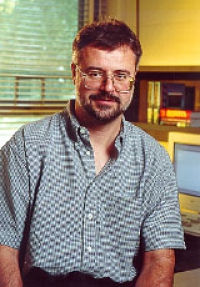Heinz-Bernd Schuttler, Professor of Physics

- hbs@uga.edu
- 313D
Research Interests
Computational physics, quantum many-body theory, strongly correlated electron systems, high-temperature superconductivity.
The primary focus of this research collaboration is the application of large-scale computational techniques to solve forefront quantum many-body problems in the theory of strongly correlated electron systems. This class of materials exhibits some of the most puzzling collective phenomena in condensed matter physics, including magnetism, high-temperature superconductivity, metal-insulator transitions and colossal magnetoresistance. We are currently developing and applying quantum Monte Carlo, exact diagonalization, numerical renormalization group and self-consistent diagram summation techniques which are implemented on massively parallel high-performance computers to study a wide range of questions concerning the superconducting d-wave pairing mechanism, magnetism, transport and insulating dielectric properties of the cuprate high-temperature superconductors and related strongly correlated electron materials. The computational and mathematical challenges posed by these problems necessitate a multi-disciplinary collaboration which includes faculty and students from Computer Science, Statistics, and from Physics and Astronomy. Our research is currently funded by a multi-disciplinary information technology grant from the U.S. National Science Foundation.
Computational biology, functional genomics, kinetics of biochemical reaction networks.
The goal of this recently initiated research collaboration is the development of chemical reaction network models which provide a quantitative, genome-wide description of the kinetics of essentially all molecular species present in a living cell. Based on ideas from statistical mechanics, we have developed a general framework, the so-called Ensemble Method, for the identification of reaction networks and for the quantitative network modeling of coupled biochemical and genetic regulatory pathways. This method has been implemented as a general network ensemble simulation code, coupled with front- and backend graphical web-based user interfaces. Successful recent applications of this method include the quinic acid (qa) gene cluster and the biological clock system in the fungal organism Neurospora crassa. This is a multi-disciplinary effort involving faculty from Genetics, Statistics, Computer Science, Botany and from Physics and Astronomy. It is closely coupled with the experimental genome sequencing and functional genomics work, led by Prof. Jonathan Arnold in the Department of Genetics. This work is currently funded by a multi-disciplinary grant from the U.S. National Science Foundation.
Recent Publications
D. Battogtokh, D.K. Asch, M.E. Case, J. Arnold and H.-B. Schüttler, "An Ensemble Method for Identifying Regulatory Circuits with Special Reference to the qa Gene Cluster of Neurospora crassa," Proc. Natl. Acad. Sci. (USA) 99, 16904-16909 (2002).
C.-J. Liu and H.-B. Schüttler, "Behavior of Damage Spreading in the Blume-Capel Model," Phys. Rev. E 65, 056103-056109 (2002).
G. Esirgen, H.-B. Schüttler, C. Grüber, and H.G. Evertz "Screened-Interaction Expansion for the Hubbard Model and Determination of the Quantum Monte Carlo Fermi Surface," Phys. Rev. B 64, 195105-195116 (2001).
G. Esirgen, H.-B. Schüttler and N.E. Bickers, "d-Wave pairing in the presence of long-range Coulomb interactions," Phys. Rev. Lett. 82, 1217-1220 (1999).
C.-H. Pao and H.-B. Schüttler, "Numerical renormalization group approach to fluctuation exchange in the presence of electron-phonon coupling: Pairing in the Holstein-Hubbard Model," Phys. Rev. B 60, 1283 (1999).

